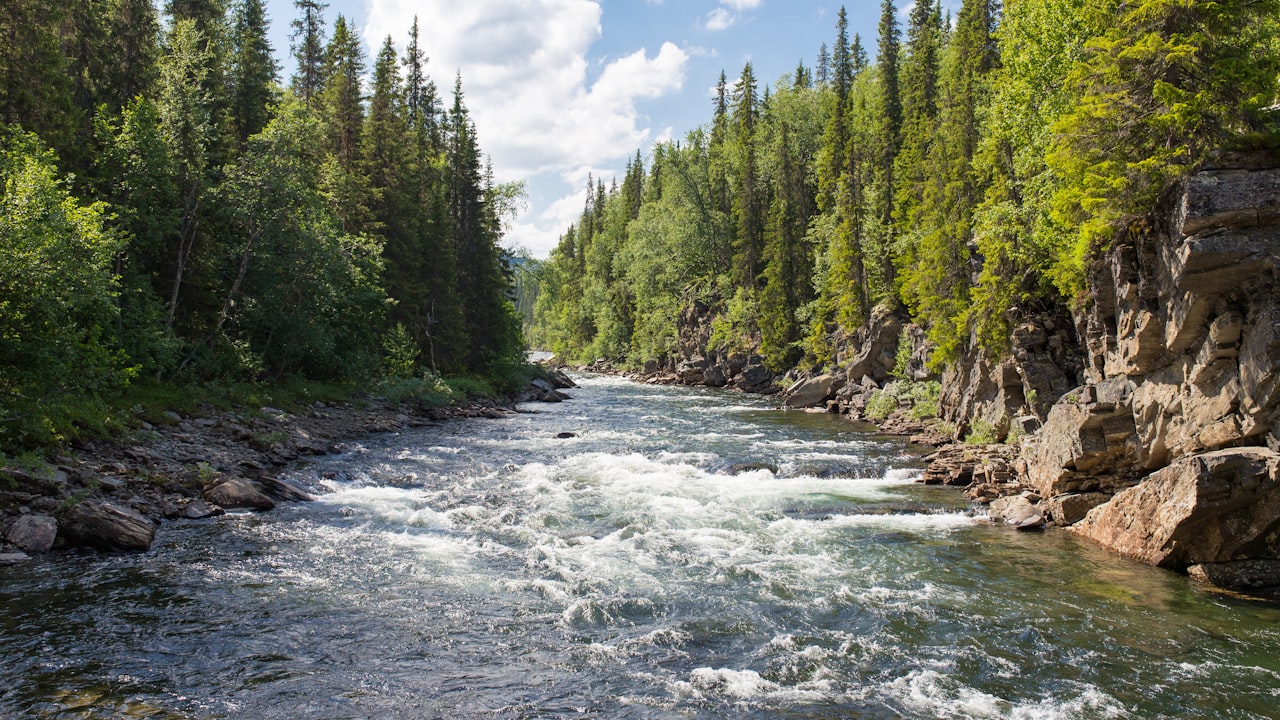Rivers: Nature’s Lifelines
Introduction
Rivers, the lifeblood of our planet, have been flowing through Earth’s landscapes for millions of years, shaping the land and sustaining life. From their humble beginnings as trickling streams to mighty currents that carve through mountains and valleys, rivers are nature’s timeless wonders. In this exploration of rivers, we will delve into their formation, ecological significance, cultural importance, economic value, and the profound impact they have on shaping landscapes and human civilizations.
The Birth of a River: From Source to Mouth
Rivers begin as humble streams or springs, emerging from glaciers, underground aquifers, or rainwater runoff. As they flow downstream, they gather momentum and volume, merging with tributaries and other rivers. The journey from the river’s source to its mouth, where it meets the ocean, can span thousands of kilometers, shaping the landscapes it traverses.
Ecological Significance: Biodiversity Havens
Rivers harbor extraordinary biodiversity, providing essential habitats for a myriad of plant and animal species. Riparian zones, the lush areas along riverbanks, are particularly rich in biodiversity, supporting various flora and providing critical nesting grounds for birds. Fish species rely on rivers for spawning and as migration pathways between freshwater and marine environments.
Cultural Importance: Nurturing Human Civilization
Throughout history, rivers have played a central role in human civilizations. Ancient settlements often emerged along riverbanks due to the availability of water for drinking, irrigation, and agriculture. Rivers served as natural trade routes, facilitating commerce and cultural exchange between distant regions. Many iconic cities today, such as London, Paris, and Cairo, are situated on the banks of legendary rivers.
Economic Value: Rivers as a Resource
Rivers are vital economic resources, supporting industries such as agriculture, fishing, and hydropower. The fertile soil deposited by rivers during floods enables productive agriculture in river valleys, contributing to food security. Fisheries along rivers provide sustenance and livelihoods for countless communities. Additionally, dams harness the power of flowing water to generate clean and renewable energy.
Erosion and Sediment Transport: Shaping Landscapes
Rivers are powerful sculptors of landscapes, eroding rocks and carrying sediment downstream. The force of flowing water carves out valleys, canyons, and gorges over geological time scales. Sediment deposition creates fertile floodplains, shaping diverse ecosystems and creating some of the most stunning natural wonders on Earth.
River Management and Conservation
As human activities impact river ecosystems, proper river management and conservation become crucial. Pollution, habitat destruction, and dam construction pose significant threats to river health. Sustainable practices, such as responsible water use, reforestation, and habitat restoration, are essential for preserving the ecological integrity of rivers and safeguarding the species that depend on them.
The Spiritual Connection: Rivers in Religion and Culture
Rivers hold spiritual significance in numerous cultures and religions worldwide. They are often revered as sacred entities, symbols of life, purification, and renewal. Pilgrimages and rituals along riverbanks are central to many religious practices, fostering a deep connection between humanity and these flowing waterways.
The Intricate Delta: Where Rivers Meet the Sea
As rivers approach their journey’s end, they often form intricate deltas, where freshwater mixes with seawater. Deltas are biodiverse ecosystems, providing unique habitats for marine life and serving as crucial breeding grounds for fish. However, deltas are vulnerable to environmental changes, including sea level rise and human impacts.
Conclusion: The Ever-Flowing Legacy
In conclusion, rivers are nature’s ever-flowing legacy, shaping landscapes, supporting biodiversity, and nurturing human civilizations. Their significance reaches far beyond the physical boundaries of their banks, permeating cultures, economies, and spiritual beliefs. As we continue to cherish and protect these lifelines of our planet, we honor the timeless gift that rivers bestow upon us and future generations.


